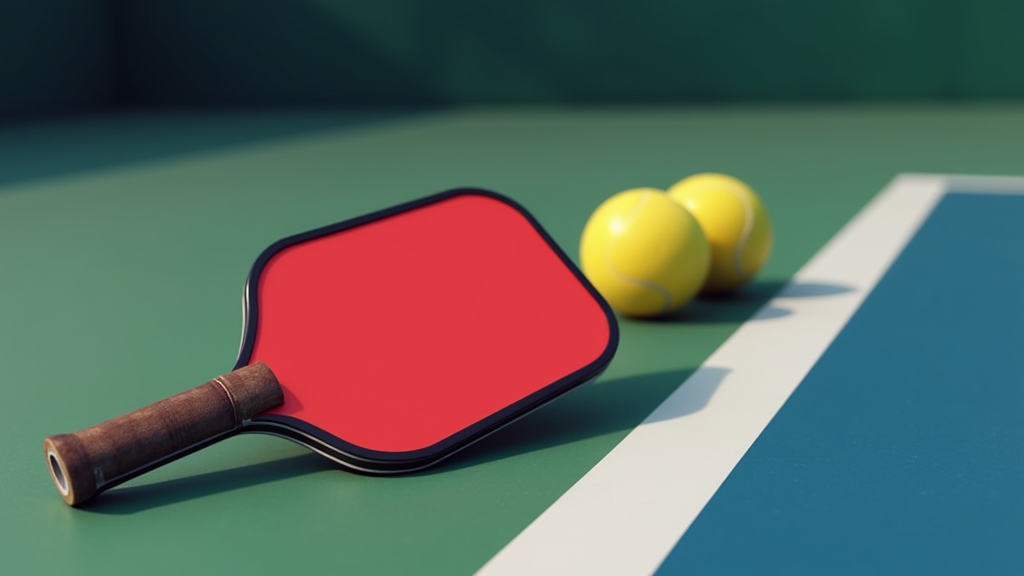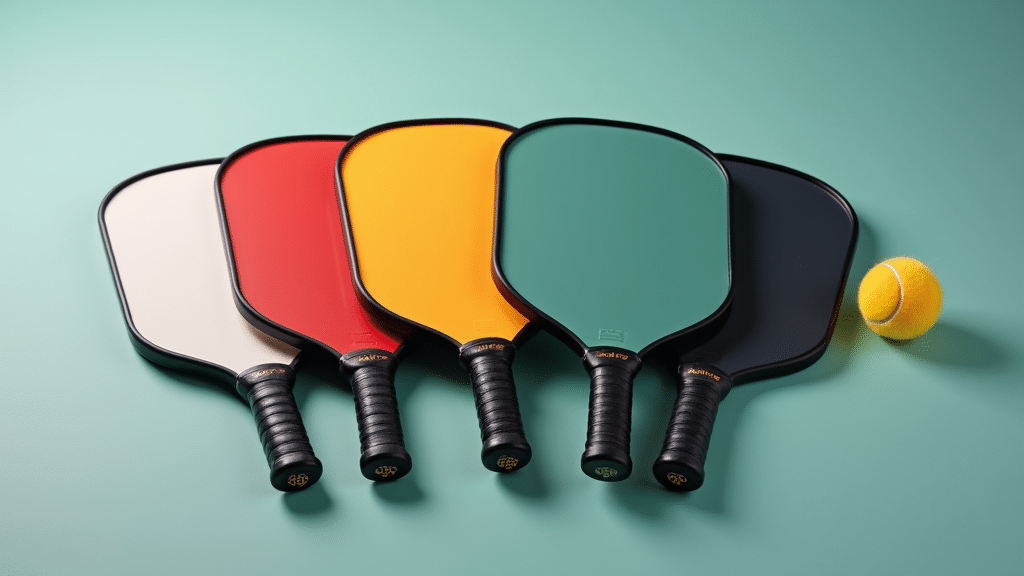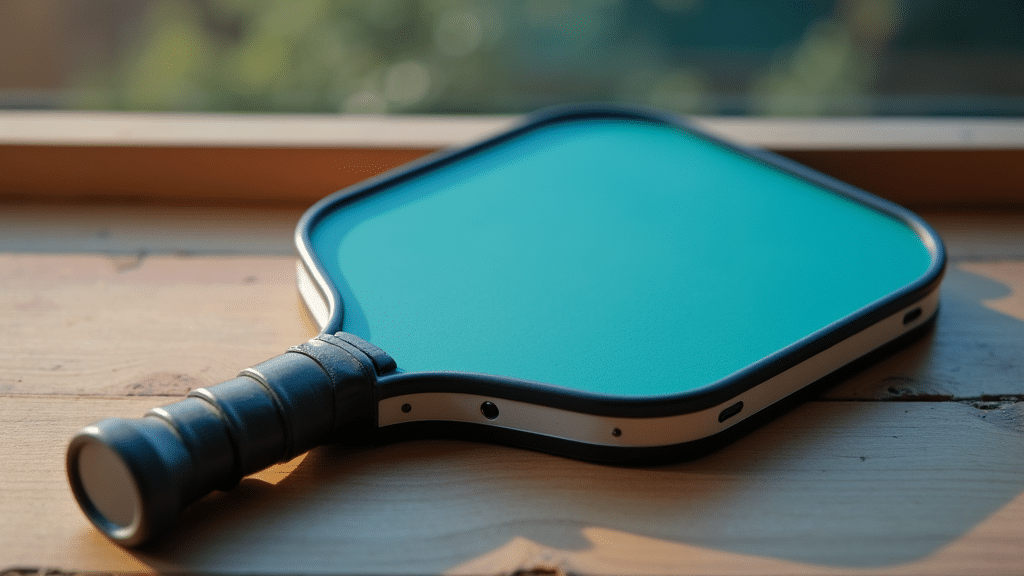Table of Contents
- Understanding the Pickleball Paddle Deflection Test Outline
- Understanding the Pickleball Paddle Deflection Test Outline
- Key Definitions for Paddle Deflection Testing
- Core Principles of Deflection Testing in Pickleball
- Essential Components for Paddle Deflection Test Execution
- Primary Paddle Features Affecting Deflection Test Results
- Secondary Paddle Characteristics and Deflection Measurements
- Variations in Paddle Performance During Deflection Testing
- Detailed Pickleball Paddle Deflection Test Outline
- Understanding the Pickleball Paddle Deflection Test Outline: UPA-A Certification
- Pickleball Paddle Deflection Test Outline: Impact and Future
- Effects of Deflection Testing on Pickleball Players
- Manufacturer Quality Control via Paddle Testing
- Destructive Testing and Pickleball Paddle Performance Monitoring
- Paddle Challenge System: Pickleball’s Future Testing Approach
- Penalties for Failing Pickleball Paddle Deflection Tests
- Player Responsibilities Regarding Pickleball Paddle Performance
- Pickleball Paddle Deflection Test Outline: Key Takeaways
- Concluding Thoughts on Pickleball Paddle Deflection Test Outline
Understanding the Pickleball Paddle Deflection Test Outline
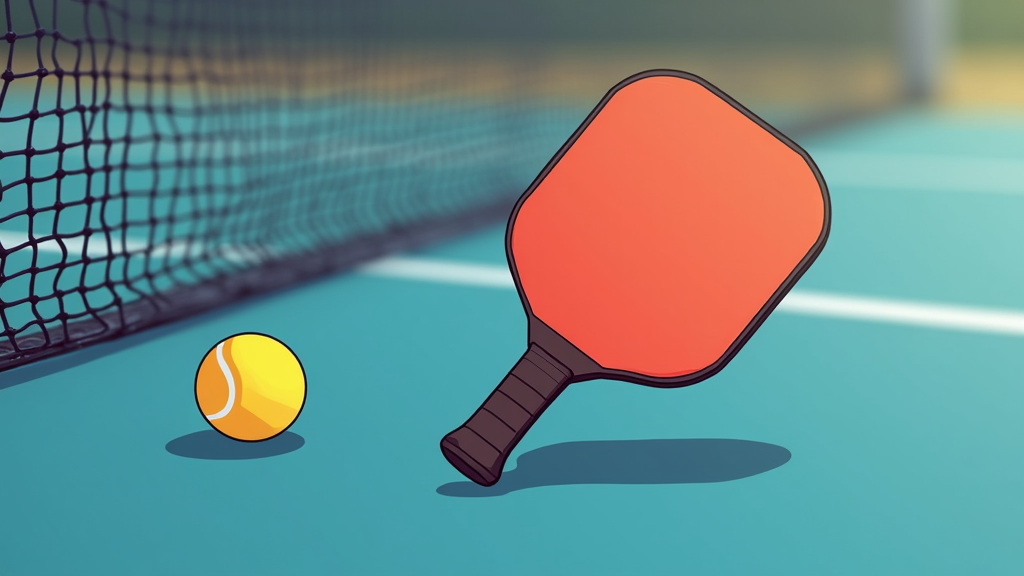
Importance of Deflection Testing in Pickleball Paddles
The pickleball paddle deflection test is a critical component in maintaining fair play within the sport. This test specifically measures the rigidity of a paddle’s surface and how much it deflects under a controlled amount of weight. This deflection directly impacts the dynamics of the ball during contact, influencing the power and control a player has.
The current deflection limit is set at ≤ 0.005 inches, measured using test weights of 3 kg and 5 kg. Furthermore, the Average Deflection Force (ADF) should be 46 lb or more. These parameters are crucial to prevent what’s known as the “trampoline effect,” where an overly flexible paddle imparts excessive force, leading to an unfair advantage. By adhering to these standards, consistent paddle performance is ensured across the board.
Historical Context of Pickleball Paddle Deflection Standards
The regulation of pickleball paddles initially centered around surface roughness, aiming to prevent excessive spin generation. However, as technology advanced, the focus shifted towards performance-based regulation. Recent developments include the introduction of destructive testing by the UPA-A (likely a typo for USAPA, the USA Pickleball Association), which involves physically testing paddles to their breaking point. This shift emphasizes a more comprehensive approach to regulation.
The implementation of USAPA Certification for professional paddles represents a significant step forward. This certification ensures that paddles meet specific performance criteria, including deflection standards, before being approved for use in sanctioned tournaments.
Key Takeaways: Pickleball Paddle Deflection Test Explained
By delving into the pickleball paddle deflection test, you’ll gain a solid understanding of core concepts such as deflection and dwell time. Deflection, as mentioned, is the amount the paddle face bends upon impact. Dwell time refers to the length of time the ball remains in contact with the paddle face. Both significantly impact the ball’s trajectory, speed, and spin.
Furthermore, you’ll learn about the practical applications of this knowledge, including understanding paddle certification and its implications. This is crucial for both players, who want to ensure they’re using compliant equipment, and manufacturers, who need to design paddles that meet USAPA standards. This knowledge empowers you to make informed decisions about your equipment and its impact on your game.
Understanding the Pickleball Paddle Deflection Test Outline
Key Definitions for Paddle Deflection Testing
When discussing pickleball paddle deflection, it’s essential to understand a few key terms. Deflection refers to how quickly the ball departs from the paddle face upon impact. Dwell time is the duration the ball remains in contact with the paddle face. Average Deflection Force (ADF) is the amount of force required to deflect the paddle to a specific degree. These metrics are crucial for evaluating paddle performance.
Core Principles of Deflection Testing in Pickleball
The core principles behind deflection testing are to ensure consistent paddle response across different models and to prevent unfair advantages due to excessive paddle flexibility. Standardized testing helps maintain a level playing field, ensuring that player skill, rather than equipment advantage, determines the outcome of a match.
Essential Components for Paddle Deflection Test Execution
A pickleball paddle deflection test requires several essential components. These include parallel supports for consistent paddle placement, a standardized force application mechanism to ensure uniform pressure, and precise measurement tools to accurately quantify the deflection in inches.
Primary Paddle Features Affecting Deflection Test Results
Several primary aspects of a pickleball paddle significantly influence deflection test results. Paddle rigidity, surface roughness, and the Paddle-Ball Coefficient of Restitution (PBCOR) are key factors that determine how much a paddle deflects and how the ball responds upon impact.
Secondary Paddle Characteristics and Deflection Measurements
Secondary aspects, while less direct, also contribute to deflection characteristics. These include the paddle weight, paddle length (with a maximum of 17 inches), and paddle width (with a combined length plus width maximum of 24 inches). These dimensions and weight distribution affect the overall feel and performance of the paddle during deflection testing.
Variations in Paddle Performance During Deflection Testing
It’s important to acknowledge potential variations in paddle performance. Differences can exist even within batches of the same paddle model due to manufacturing tolerances. Additionally, paddle performance can change over time as the paddle undergoes a break-in period, affecting its deflection characteristics.
Detailed Pickleball Paddle Deflection Test Outline
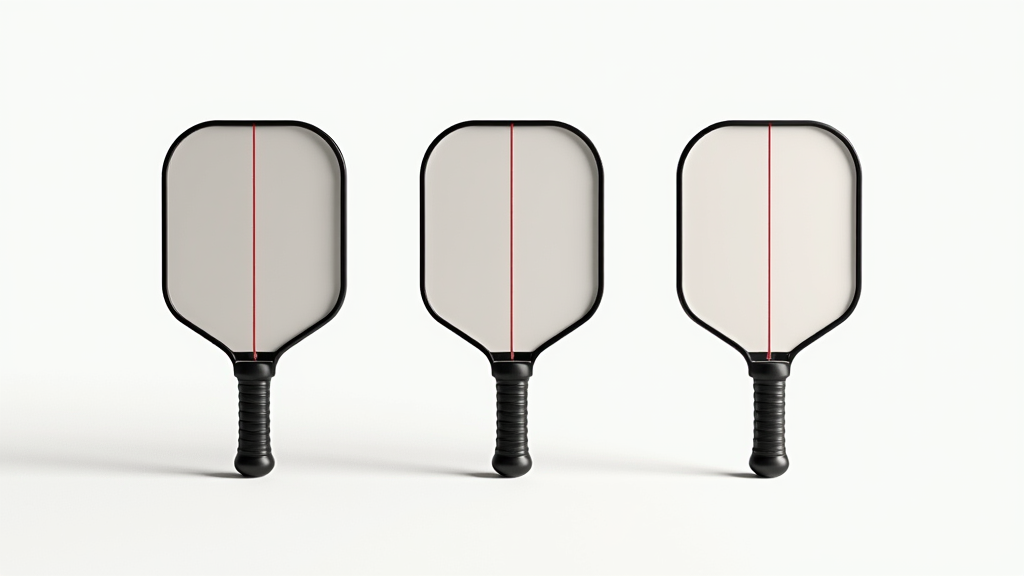
Preparing for Pickleball Paddle Deflection Testing
Proper preparation is crucial for accurate and reliable pickleball paddle deflection testing. This involves gathering the necessary materials, setting up the testing environment, and understanding the key considerations that can affect the results.
- Required Materials:
- Pickleball paddle
- Parallel support blocks
- Force application device with calibrated weights
- Measuring instrument (capable of measuring deflection in thousandths of an inch)
- Ambient conditioning environment (70-75°F)
Initial Setup: Begin by placing the pickleball paddle securely on the parallel support blocks. Ensure the paddle is stable and properly aligned to prevent any unwanted movement during the test.
Important Considerations: Pay close attention to environmental conditions such as temperature and humidity, as these can significantly influence the paddle’s material properties. Ensure all measuring instruments are calibrated correctly, and that a standardized force application method is used for consistent results.
Step-by-Step Pickleball Paddle Deflection Test Process
Following a clear, step-by-step process is essential for conducting a pickleball paddle deflection test. Here’s a detailed guide to ensure accuracy and consistency in your measurements.
Best Practices: Always use calibrated instruments to ensure accuracy. Conduct multiple measurements and calculate the average to minimize errors. Maintain consistent environmental conditions throughout the testing process.
Common Mistakes to Avoid: Avoid incorrect paddle alignment, which can skew deflection measurements. Ensure consistent force application to prevent variability in results. Neglecting environmental factors such as temperature and humidity can also lead to inaccurate data.
Advanced Pickleball Paddle Deflection Testing Techniques
For more in-depth analysis and optimization, advanced techniques can provide valuable insights into pickleball paddle performance and durability. These techniques are often used by manufacturers and researchers.
Expert Tips: Use high-speed cameras to analyze the spin rate of the ball upon contact with the paddle. Employ motion tracking software for precise measurements of paddle deflection and ball trajectory.
Optimization Methods: Analyze the performance lifecycle of the paddle by monitoring changes in deflection and PBCOR (coefficient of restitution) over time. This helps in understanding the paddle’s durability and performance degradation.
Troubleshooting: Address any inconsistencies in measurements by carefully reviewing the testing setup and calibration of instruments. Identify variations in paddle batches to ensure quality control. Ensure compliance with UPA-A certification standards to meet regulatory requirements.
Understanding the Pickleball Paddle Deflection Test Outline: UPA-A Certification
UPA-A Certification Requirements and Testing Process
Starting September 1, 2025, UPA-A certification will be mandatory for all paddles used in professional UPA events. This ensures fair play and maintains consistent equipment standards across competitions. Each individual paddle model undergoes rigorous testing to achieve certification. For models with only aesthetic differences, a Design Registration Form must be submitted.
The testing and certification process is a collaborative effort between Pickle Pro Labs, the UPA, and the University of Massachusetts Lowell. These standards are designed to ensure a level playing field for all players and to drive improvements in overall paddle quality and performance.
Pickleball Paddle Deflection Test Outline: Fees and Specifications
The cost for certifying a pickleball paddle model is $2,000. Additionally, there is an annual brand fee of $20,000. These fees contribute to the ongoing research, testing, and maintenance of certification standards.
Paddle specifications are crucial for compliance. The maximum paddle length is 17 inches, and the maximum combined length plus width cannot exceed 24 inches. These dimensions are strictly enforced during the certification process.
Average Deflection Force (ADF) Test in Paddle Certification
The Average Deflection Force (ADF) test is a key component of the certification. Each paddle face must have an ADF of 46 lb or more when tested at a temperature between 70-75°F. This ensures that paddles meet minimum stiffness requirements.
Spin Test Specifications within the Paddle Approval Process
The spin test limits the paddle’s ability to impart excessive spin on the ball. Paddles cannot exceed 2200 RPM during the spin test. Prior to testing, paddles undergo a conditioning period of 4-24 hours to ensure consistent results.
Pickleball Paddle Deflection Test Outline: Impact and Future

Effects of Deflection Testing on Pickleball Players
The implementation of the pickleball paddle deflection test is primarily intended to ensure fairness in professional pickleball play. By setting a standard for paddle flexibility, the test aims to level the playing field and prevent manufacturers from creating paddles that provide an unfair competitive advantage. This benefits players by ensuring that skill and strategy are the primary determinants of success, rather than equipment superiority.
Manufacturer Quality Control via Paddle Testing
Beyond fairness, the deflection test outline serves as a crucial tool for quality control among pickleball paddle manufacturers. The test helps manage and reduce variability among different paddle models, ensuring that each paddle meets the established performance standards. This leads to more consistent performance across paddle brands and models, providing players with reliable equipment.
Destructive Testing and Pickleball Paddle Performance Monitoring
Destructive testing, a component of the broader paddle testing process, replicates the stresses and impacts experienced during gameplay. This allows manufacturers and regulatory bodies to monitor how a paddle’s performance changes over time and under repeated use. By understanding these changes, improvements can be made to paddle construction and durability, ultimately benefiting players with longer-lasting and more consistent equipment.
Paddle Challenge System: Pickleball’s Future Testing Approach
Looking ahead, the sport will introduce a paddle challenge system in professional pickleball events, slated to begin in 2025. This system will allow players to challenge the legality of an opponent’s paddle, adding another layer of scrutiny to ensure compliance with the established deflection standards. This proactive approach aims to maintain the integrity of the game and prevent any potential rule violations.
Penalties for Failing Pickleball Paddle Deflection Tests
To ensure compliance with the paddle regulations, penalties will be enforced for paddles that fail follow-up testing after a challenge. These penalties could range from warnings to disqualifications, depending on the severity of the violation. The implementation of penalties serves as a deterrent against the use of non-compliant paddles and reinforces the importance of adhering to the established standards.
Player Responsibilities Regarding Pickleball Paddle Performance
The introduction of the deflection test and challenge system also places a greater emphasis on player responsibilities regarding paddle performance. Players are now more accountable for ensuring that their equipment meets the required standards. This includes understanding the regulations, selecting compliant paddles, and being aware of the potential consequences of using non-compliant equipment. Ultimately, promoting fair play and maintaining the integrity of pickleball relies on the active participation and responsibility of its players.
Pickleball Paddle Deflection Test Outline: Key Takeaways
Recap: Importance of Pickleball Paddle Deflection Testing
The pickleball paddle deflection test is a cornerstone of maintaining fair play and ensuring consistent performance across different paddles. By measuring how much a paddle bends under a specific force, the test helps to prevent manufacturers from creating paddles that provide an unfair advantage due to excessive flexibility or trampoline effect.
UPA-A Certification and Deflection Standards
UPA-A certification plays a crucial role in enforcing these deflection standards. Paddles that pass the deflection test receive certification, assuring players that the equipment meets established regulations. This certification is a benchmark for quality and compliance within the pickleball community.
Future Advancements in Paddle Deflection Measurement
The field of pickleball paddle testing is continually evolving. Ongoing research and development aim to refine testing methods, improve accuracy, and address any inconsistencies that may arise. These advancements will further enhance the reliability of the deflection test and contribute to a more level playing field.
Concluding Thoughts on Pickleball Paddle Deflection Test Outline
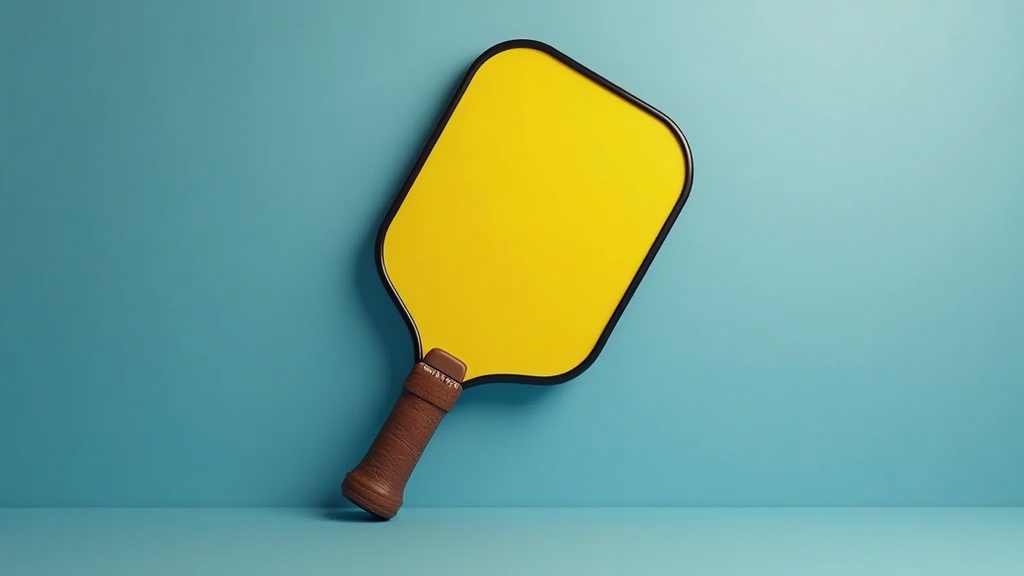
Importance of Staying Informed on Paddle Testing
For both players and manufacturers, staying informed about pickleball paddle deflection testing procedures and certification requirements is essential. Players can make informed decisions about their equipment, while manufacturers can ensure their products meet the necessary standards for competitive play.
Continued Refinement of Paddle Testing Methods
The continued refinement of testing methods is vital for the integrity of the sport. As technology advances and new materials are developed, ongoing efforts to improve the accuracy and reliability of the pickleball paddle deflection test will help maintain a fair and competitive environment for all players.

